-
 Bitcoin
Bitcoin $96,840.9443
0.58% -
 Ethereum
Ethereum $1,833.9893
-0.06% -
 Tether USDt
Tether USDt $1.0004
0.01% -
 XRP
XRP $2.2190
-0.77% -
 BNB
BNB $598.9344
-0.89% -
 Solana
Solana $150.7358
-0.73% -
 USDC
USDC $1.0000
-0.02% -
 Dogecoin
Dogecoin $0.1815
1.94% -
 Cardano
Cardano $0.7104
1.19% -
 TRON
TRON $0.2457
-1.15% -
 Sui
Sui $3.4570
-6.80% -
 Chainlink
Chainlink $14.6363
-1.89% -
 Avalanche
Avalanche $21.2915
-0.53% -
 Stellar
Stellar $0.2770
-0.67% -
 UNUS SED LEO
UNUS SED LEO $8.8769
-0.82% -
 Shiba Inu
Shiba Inu $0.0...01351
-0.46% -
 Toncoin
Toncoin $3.1874
-0.65% -
 Hedera
Hedera $0.1858
-1.53% -
 Bitcoin Cash
Bitcoin Cash $370.7921
0.30% -
 Hyperliquid
Hyperliquid $20.5704
-1.30% -
 Litecoin
Litecoin $88.4349
2.15% -
 Polkadot
Polkadot $4.1932
0.22% -
 Dai
Dai $1.0000
-0.02% -
 Monero
Monero $287.1426
5.89% -
 Bitget Token
Bitget Token $4.3947
0.12% -
 Ethena USDe
Ethena USDe $1.0009
0.04% -
 Pi
Pi $0.5977
-2.54% -
 Pepe
Pepe $0.0...08697
-3.52% -
 Aptos
Aptos $5.4640
-0.71% -
 Uniswap
Uniswap $5.2572
-2.33%
How are Bitcoin transaction fees calculated? When will the fees become high?
Bitcoin transaction fees, crucial for miners, depend on transaction size and user-set fee rates; high demand and network congestion can drive these fees up significantly.
May 02, 2025 at 11:07 am
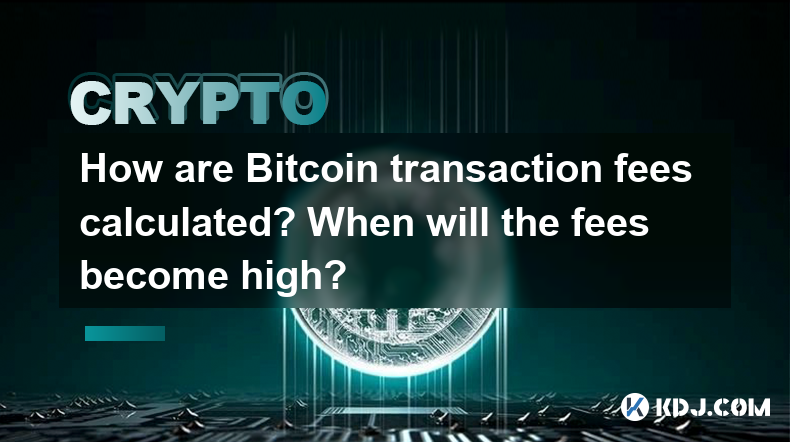
Bitcoin transaction fees are a crucial aspect of the cryptocurrency ecosystem, influencing the speed and priority of transactions on the blockchain. Understanding how these fees are calculated and the conditions under which they can become high is essential for users to effectively manage their transactions.
What are Bitcoin Transaction Fees?
Bitcoin transaction fees are payments made by users to incentivize miners to include their transactions in the next block. These fees are necessary because they compensate miners for the computational power and electricity used to secure the network. The fee is typically measured in satoshis per byte (sat/byte), where one satoshi is the smallest unit of bitcoin, equivalent to 0.00000001 BTC.
How are Bitcoin Transaction Fees Calculated?
The calculation of Bitcoin transaction fees involves several factors, primarily the size of the transaction in bytes and the fee rate set by the user. Here's a detailed breakdown of how these fees are determined:
Transaction Size: The size of a transaction is measured in bytes and depends on the number of inputs and outputs. Each transaction input and output adds to the total size. For example, a simple transaction with one input and one output might be around 250 bytes, while a more complex transaction with multiple inputs and outputs could be much larger.
Fee Rate: The fee rate is the amount of satoshis the user is willing to pay per byte. This rate is set by the user and can be adjusted based on how quickly they want their transaction to be processed. A higher fee rate increases the likelihood of the transaction being included in the next block.
Formula: The total fee is calculated by multiplying the transaction size (in bytes) by the fee rate (in sat/byte). For example, if a transaction is 250 bytes and the fee rate is 20 sat/byte, the total fee would be 250 * 20 = 5,000 satoshis.
Factors Influencing Bitcoin Transaction Fees
Several factors can influence the level of Bitcoin transaction fees at any given time:
Network Congestion: When the Bitcoin network experiences high volumes of transactions, miners have more transactions to choose from. This can lead to increased competition for block space, driving up fees. During periods of high demand, users may need to pay higher fees to ensure their transactions are processed quickly.
Block Size Limit: The Bitcoin blockchain has a block size limit of 1 MB, which means only a certain number of transactions can be included in each block. When the number of pending transactions exceeds the capacity of the blocks, fees can rise as users bid to get their transactions prioritized.
Miner Preferences: Miners have the discretion to choose which transactions to include in a block based on the fees offered. They typically prioritize transactions with higher fees to maximize their revenue, which can lead to higher overall fees during periods of high demand.
When Will Bitcoin Transaction Fees Become High?
Bitcoin transaction fees can become high under specific conditions, primarily driven by network demand and congestion:
High Transaction Volume: During times of increased usage, such as major market movements or when large numbers of users are transacting, the network can become congested. This congestion leads to higher fees as users compete for limited block space.
Market Events: Significant events in the cryptocurrency market, such as major price fluctuations or the launch of new projects, can lead to a surge in transaction volume. For example, during a bull market, more users might be buying and selling Bitcoin, leading to higher fees.
Seasonal Trends: Certain times of the year, such as holidays or the end of the financial year, can see increased transaction activity, pushing fees higher. This is often due to a combination of increased consumer spending and speculative trading.
Network Upgrades: Occasionally, network upgrades or changes in the protocol can lead to temporary spikes in fees. This is usually due to increased activity as users and miners adjust to the new rules.
Strategies to Manage Bitcoin Transaction Fees
Users can employ several strategies to manage and potentially reduce their Bitcoin transaction fees:
Adjusting Fee Rates: Users can manually set their fee rates based on current network conditions. Tools like Bitcoin fee estimators can help determine an appropriate fee rate to ensure timely processing without overpaying.
Using SegWit: Segregated Witness (SegWit) is an upgrade to the Bitcoin protocol that allows for more efficient use of block space, effectively reducing transaction sizes and fees. Using SegWit-enabled wallets can help lower fees.
Batching Transactions: Combining multiple transactions into a single one can reduce the total fee. This is particularly useful for businesses or individuals who frequently send small amounts of Bitcoin.
Timing Transactions: Avoiding peak times of network congestion can help keep fees lower. Monitoring network activity and planning transactions during off-peak hours can be beneficial.
Frequently Asked Questions
Q: Can Bitcoin transaction fees be zero?
A: While it is theoretically possible to set a transaction fee to zero, such transactions are unlikely to be processed by miners, as they offer no incentive. Miners prioritize transactions with higher fees to maximize their revenue, so transactions with zero fees may remain unconfirmed for an extended period or indefinitely.
Q: How do transaction fees affect the security of the Bitcoin network?
A: Transaction fees play a crucial role in the security of the Bitcoin network. They incentivize miners to continue validating transactions and securing the network, especially as the block reward from newly minted bitcoins decreases over time. Higher fees can lead to increased miner participation, enhancing the network's security.
Q: Are there any alternatives to paying high Bitcoin transaction fees?
A: Yes, there are several alternatives to managing high Bitcoin transaction fees. Users can consider using other cryptocurrencies with lower fees, such as Bitcoin Cash or Litecoin, for smaller transactions. Additionally, layer-two solutions like the Lightning Network can facilitate faster and cheaper transactions off the main Bitcoin blockchain.
Q: How do I estimate Bitcoin transaction fees before sending a transaction?
A: To estimate Bitcoin transaction fees, users can use online fee estimators provided by services like BitcoinFees, BitInfoCharts, or directly through their wallet software. These tools analyze current network conditions and suggest appropriate fee rates to ensure timely transaction processing.
Disclaimer:info@kdj.com
The information provided is not trading advice. kdj.com does not assume any responsibility for any investments made based on the information provided in this article. Cryptocurrencies are highly volatile and it is highly recommended that you invest with caution after thorough research!
If you believe that the content used on this website infringes your copyright, please contact us immediately (info@kdj.com) and we will delete it promptly.
- StakeStone (STO) Airdrop Now Live: Get Free Tokens by Holding BNB
- 2025-05-02 21:35:13
- This Week in Crypto: Bitcoin Tests $97,000, Sui Pokémon Collaboration Rumors, ProShares XRP ETF Delayed
- 2025-05-02 21:35:13
- Arctic Pablo Shines as the Best Crypto to Invest in 2025, While Celestia and Terra Classic Hold the Line
- 2025-05-02 21:30:13
- MIND of Pepe Protocol Prepares to Double Down on the AI Agent Crypto Hype
- 2025-05-02 21:30:13
- By Francisco Rodrigues (All times ET unless indicated otherwise)
- 2025-05-02 21:25:12
- These 3 meme coins are rising this week as fears about the US-China trade war soften
- 2025-05-02 21:25:12
Related knowledge
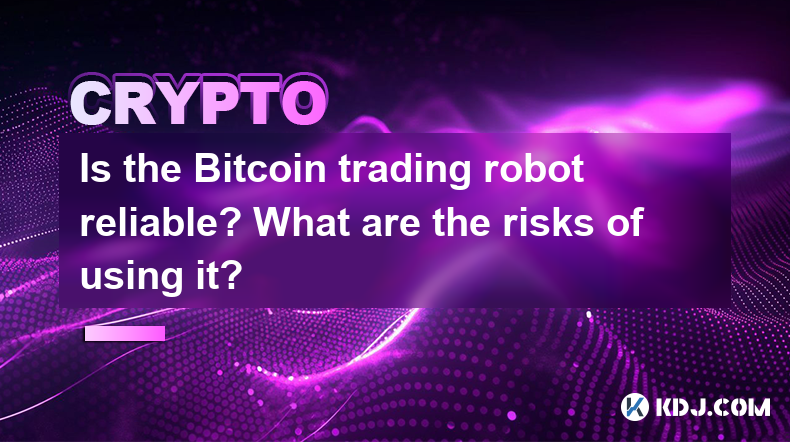
Is the Bitcoin trading robot reliable? What are the risks of using it?
Apr 29,2025 at 05:28am
Is the Bitcoin trading robot reliable? What are the risks of using it? Bitcoin trading robots, also known as crypto trading bots, have become increasingly popular among traders looking to automate their trading strategies. These bots operate based on pre-defined algorithms to execute trades on behalf of the user. However, their reliability and associate...

What is Bitcoin trading slippage? How to reduce slippage losses?
Apr 29,2025 at 07:35pm
Bitcoin trading slippage refers to the difference between the expected price of a trade and the price at which the trade is actually executed. This phenomenon is particularly prevalent in fast-moving markets or during times of high volatility. Slippage can occur on both buy and sell orders and can significantly impact the profitability of trading strate...
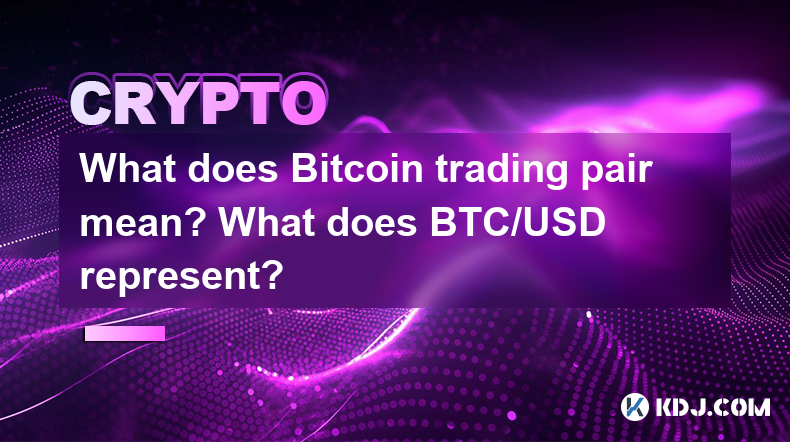
What does Bitcoin trading pair mean? What does BTC/USD represent?
Apr 30,2025 at 03:56am
Introduction to Bitcoin Trading PairsBitcoin trading pairs are essentially combinations of cryptocurrencies or other financial instruments that are traded against each other on a cryptocurrency exchange. The term 'trading pair' is used to describe the two assets involved in the trade. For instance, when you see a trading pair like BTC/USD, it means Bitc...
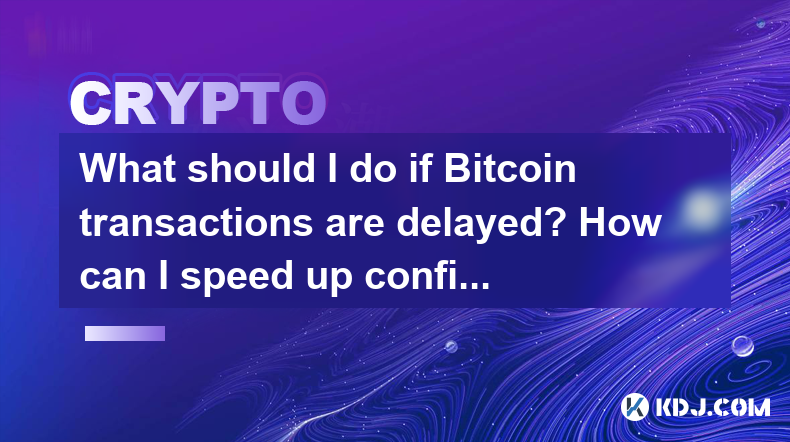
What should I do if Bitcoin transactions are delayed? How can I speed up confirmation?
Apr 28,2025 at 02:42pm
If you're experiencing delays with your Bitcoin transactions and are looking for ways to speed up confirmation, it's important to understand the underlying reasons for the delays and the steps you can take to mitigate them. This article will guide you through the process of identifying why your transaction might be delayed and how you can take action to...
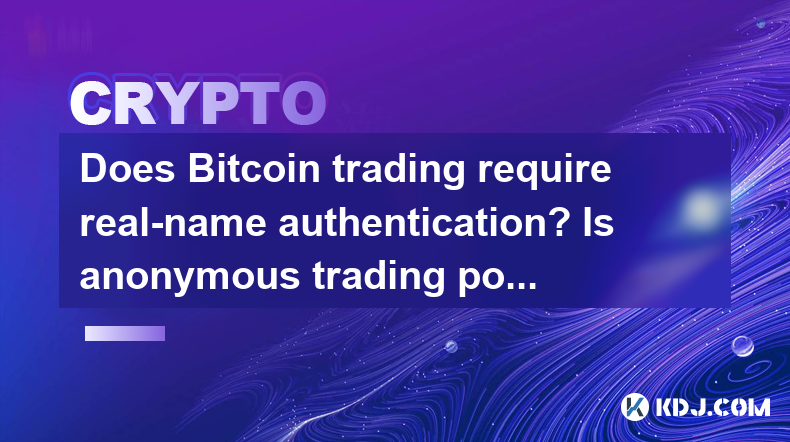
Does Bitcoin trading require real-name authentication? Is anonymous trading possible?
Apr 29,2025 at 03:14pm
Introduction to Bitcoin Trading and Identity VerificationBitcoin trading has become a popular way for individuals to engage in the cryptocurrency market. One of the key questions that many potential traders ask is whether trading Bitcoin requires real-name authentication, and if anonymous trading is possible. This article will delve into these topics, p...
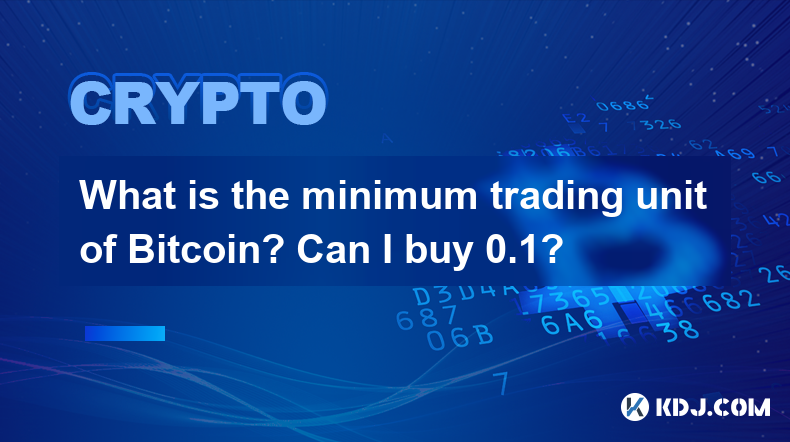
What is the minimum trading unit of Bitcoin? Can I buy 0.1?
Apr 29,2025 at 11:42am
The minimum trading unit of Bitcoin is a topic of interest for many new entrants into the cryptocurrency market. Understanding the minimum trading unit is crucial for anyone looking to invest in Bitcoin, as it directly affects how much one can buy and the strategies they can employ. The basic unit of Bitcoin is known as a satoshi, named after the pseudo...

Is the Bitcoin trading robot reliable? What are the risks of using it?
Apr 29,2025 at 05:28am
Is the Bitcoin trading robot reliable? What are the risks of using it? Bitcoin trading robots, also known as crypto trading bots, have become increasingly popular among traders looking to automate their trading strategies. These bots operate based on pre-defined algorithms to execute trades on behalf of the user. However, their reliability and associate...

What is Bitcoin trading slippage? How to reduce slippage losses?
Apr 29,2025 at 07:35pm
Bitcoin trading slippage refers to the difference between the expected price of a trade and the price at which the trade is actually executed. This phenomenon is particularly prevalent in fast-moving markets or during times of high volatility. Slippage can occur on both buy and sell orders and can significantly impact the profitability of trading strate...

What does Bitcoin trading pair mean? What does BTC/USD represent?
Apr 30,2025 at 03:56am
Introduction to Bitcoin Trading PairsBitcoin trading pairs are essentially combinations of cryptocurrencies or other financial instruments that are traded against each other on a cryptocurrency exchange. The term 'trading pair' is used to describe the two assets involved in the trade. For instance, when you see a trading pair like BTC/USD, it means Bitc...

What should I do if Bitcoin transactions are delayed? How can I speed up confirmation?
Apr 28,2025 at 02:42pm
If you're experiencing delays with your Bitcoin transactions and are looking for ways to speed up confirmation, it's important to understand the underlying reasons for the delays and the steps you can take to mitigate them. This article will guide you through the process of identifying why your transaction might be delayed and how you can take action to...

Does Bitcoin trading require real-name authentication? Is anonymous trading possible?
Apr 29,2025 at 03:14pm
Introduction to Bitcoin Trading and Identity VerificationBitcoin trading has become a popular way for individuals to engage in the cryptocurrency market. One of the key questions that many potential traders ask is whether trading Bitcoin requires real-name authentication, and if anonymous trading is possible. This article will delve into these topics, p...

What is the minimum trading unit of Bitcoin? Can I buy 0.1?
Apr 29,2025 at 11:42am
The minimum trading unit of Bitcoin is a topic of interest for many new entrants into the cryptocurrency market. Understanding the minimum trading unit is crucial for anyone looking to invest in Bitcoin, as it directly affects how much one can buy and the strategies they can employ. The basic unit of Bitcoin is known as a satoshi, named after the pseudo...
See all articles





















































































